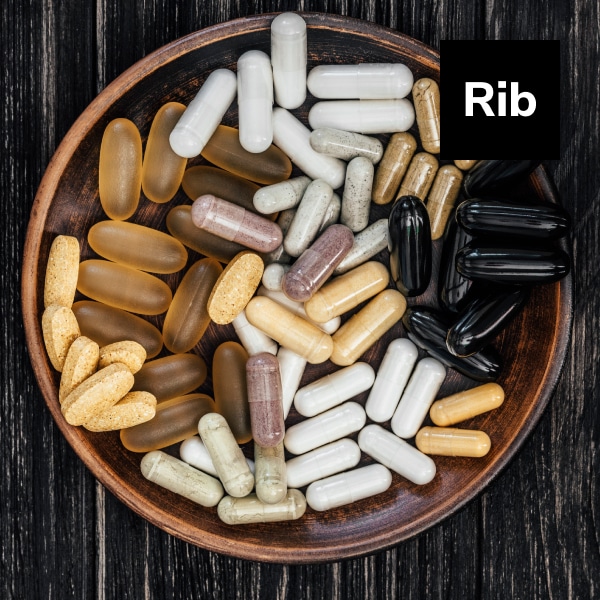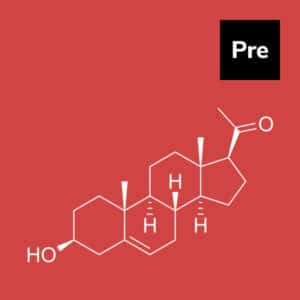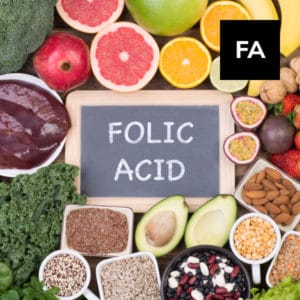Overview
Riboflavin, or vitamin B-2, is an essential dietary component required in small amounts for many functions, including regenerating the vital antioxidant glutathione and helping your body convert carbohydrates into fuel. It must be obtained through food or nutritional supplementation.
Key Benefits
- Helps to maintain a healthy carbohydrate, fat, and protein metabolism.
- Converts tryptophan into niacin
- Aids in the maintenance of good vision, skin, nails, and hair Aids in the prevention of cataracts
- Migraines may be reduced in frequency and severity.
- Reduces the risk of preeclampsia and severe bleeding in pregnant women
- Aids in the reduction of homocysteine levels
History of Usage
Alexander Wynter Blyth, an English chemist, discovered a pigment with yellow-green fluorescence in milk in 1872, but it wasn’t until the early 1930s that the substance was identified as riboflavin.
The discovery of the first vitamin, thiamine, sparked interest in accessory food factors in the latter half of the nineteenth century.
Thiamine was discovered to be water-soluble and was given the name vitamin B. (1). The researchers did, however, identify one or more water-soluble components, which they called the vitamin B-2 complex.
In the early 1900s, researchers began looking for these extraneous food factors in milk, whole wheat, yeast, and liver. Riboflavin was the second vitamin isolated, and the first from the vitamin B-2 complex; the vitamin’s essentiality as a food constituent for humans was demonstrated in 1939.
For many decades, riboflavin was produced industrially through chemical synthesis. At the moment, the development of cost-effective and environmentally friendly fermentation processes based primarily on Bacillus subtilis and Ashbya gossypii strains has largely replaced the synthetic process on an industrial scale.
Biochemistry
Riboflavin is required for the formation of two major coenzymes, flavin mononucleotide (FMN; also known as riboflavin-5′-phosphate) and flavin adenine dinucleotide (FAD) (FAD). These coenzymes are essential for energy production, cellular function, growth and development, and fat, drug, and steroid metabolism.
Most vitamins protect against the harmful effects of the sun, but riboflavin is an exception. It has the unsavory property of reacting with light, resulting in the formation of peroxides, phototoxic compounds, and DNA damage.
This issue was discovered in cell culture studies using excess riboflavin, and it has now been proven to be a cause of liver dysfunction in people given riboflavin-containing intravenous vitamins. Riboflavin actually reacts with the light in the room, producing a number of toxic compounds. Many of these phototoxic compounds are highly toxic.
Furthermore, because B2 is destroyed by light, foods, and supplements containing riboflavin should be stored in dark or opaque containers. Because of this sensitivity, prolonged light therapy to treat newborn jaundice or skin disorders can result in riboflavin deficiency.
The daily requirement for riboflavin for humans is less than 2 milligrams, but many common vitamin supplements contain tens or hundreds of milligrams. There is little scientific justification for taking riboflavin supplements far in excess of the known dietary requirement.
Recent Trends
The global riboflavin market is growing at a CAGR of 4.5% during the forecast period of 2020-2025. Riboflavin is widely utilized as an additive in the food and feed industries to ensure an adequate supply.
The current focus of research is on the role of riboflavin in determining circulating homocysteine levels, a risk factor for cardiovascular disease. Riboflavin is being included in topical creams and cosmetics because it supposedly assists in the treatment of rosacea, acnea, eczema, dermatitis, sun-damaged skin, signs of aging, dryness, and hyper-pigmentation.
Riboflavin is also used in various eye treatments, including Lasik, and in corneal cross-linking treatment of keratoconus, which involves putting drops of riboflavin into the cornea and then exposing it to ultraviolet light.
Precautions
- Vegans and vegetarian athletes are at high risk for a riboflavin deficiency and should take a dietary supplement.
- Pregnant and breastfeeding women who do not consume dairy are at risk for a riboflavin deficiency, which can affect both mother and child.
- Alcoholics are at increased risk for riboflavin deficiency.
- Individuals who take anti-malarial drugs, chemo, phenobarbital, and phenothiazine derivatives should consult with their health care provider before taking a riboflavin supplement.
References
- Thompson DF, Saluja HS. Prophylaxis of migraine headaches with riboflavin: A systematic review. J Clin Pharm Ther. 2017 Aug;42(4):394-403. doi: 10.1111/jcpt.12548. Epub 2017 May 8. PMID: 28485121.
- Namazi N, Heshmati J, Tarighat-Esfanjani A. Supplementation with Riboflavin (Vitamin B2) for Migraine Prophylaxis in Adults and Children: A Review. Int J Vitam Nutr Res. 2015;85(1-2):79-87. doi: 10.1024/0300-9831/a000225. PMID: 26780280.
- Powers HJ. Riboflavin (vitamin B-2) and health. Am J Clin Nutr. 2003 Jun;77(6):1352-60. doi: 10.1093/ajcn/77.6.1352. PMID: 12791609.
- Northrop-Clewes CA, Thurnham DI. The discovery and characterization of riboflavin. Ann Nutr Metab. 2012;61(3):224-30. doi: 10.1159/000343111. Epub 2012 Nov 26. PMID: 23183293.
- Revuelta JL, Ledesma-Amaro R, Lozano-Martinez P, Díaz-Fernández D, Buey RM, Jiménez A. Bioproduction of riboflavin: a bright yellow history. J Ind Microbiol Biotechnol. 2017 May;44(4-5):659-665. doi: 10.1007/s10295-016-1842-7. Epub 2016 Sep 30. PMID: 27696023.
- Thakur K, Tomar SK, Singh AK, Mandal S, Arora S. Riboflavin and health: A review of recent human research. Crit Rev Food Sci Nutr. 2017 Nov 22;57(17):3650-3660. doi: 10.1080/10408398.2016.1145104. PMID: 27029320.
- Eckhert CD, Hsu MH, Pang N, Photoreceptor damage following exposure to excess riboflavin, Experientia 1993 Dec 15;49(12):1084-7
- Institute of Medicine. Food and Nutrition Board. Dietary Reference Intakes: Thiamin, Riboflavin, Niacin, Vitamin B6, Folate, Vitamin B12, Pantothenic Acid, Biotin, and Choline. Washington, DC: National Academy Press; 1998.
- McCormick DB. Riboflavin. In: Erdman JW, Macdonald IA, Zeisel SH, eds. Present Knowledge in Nutrition. 10th ed. Washington, DC: Wiley-Blackwell; 2012:280-92.
- Gaylord AM, Warthesen JJ, Smith DE. Influence of milk fat, milk solids, and light intensity on the light stability of vitamin A and riboflavin in lowfat milk. J Dairy Sci 1986;69:2779-84.




